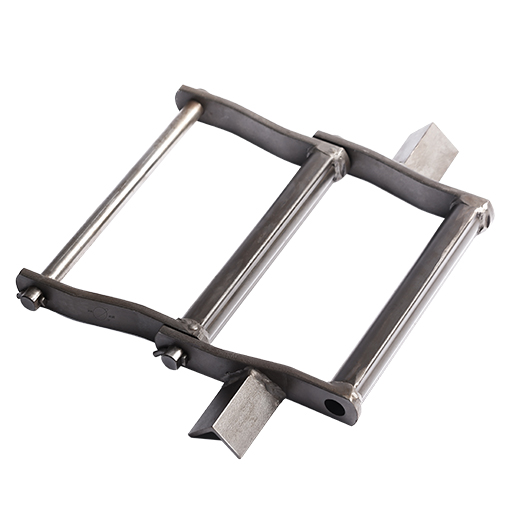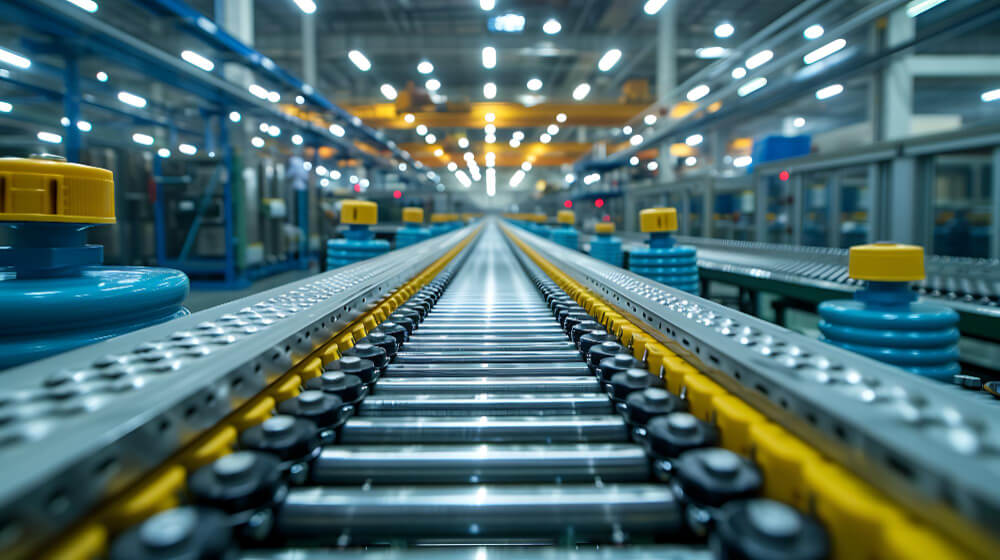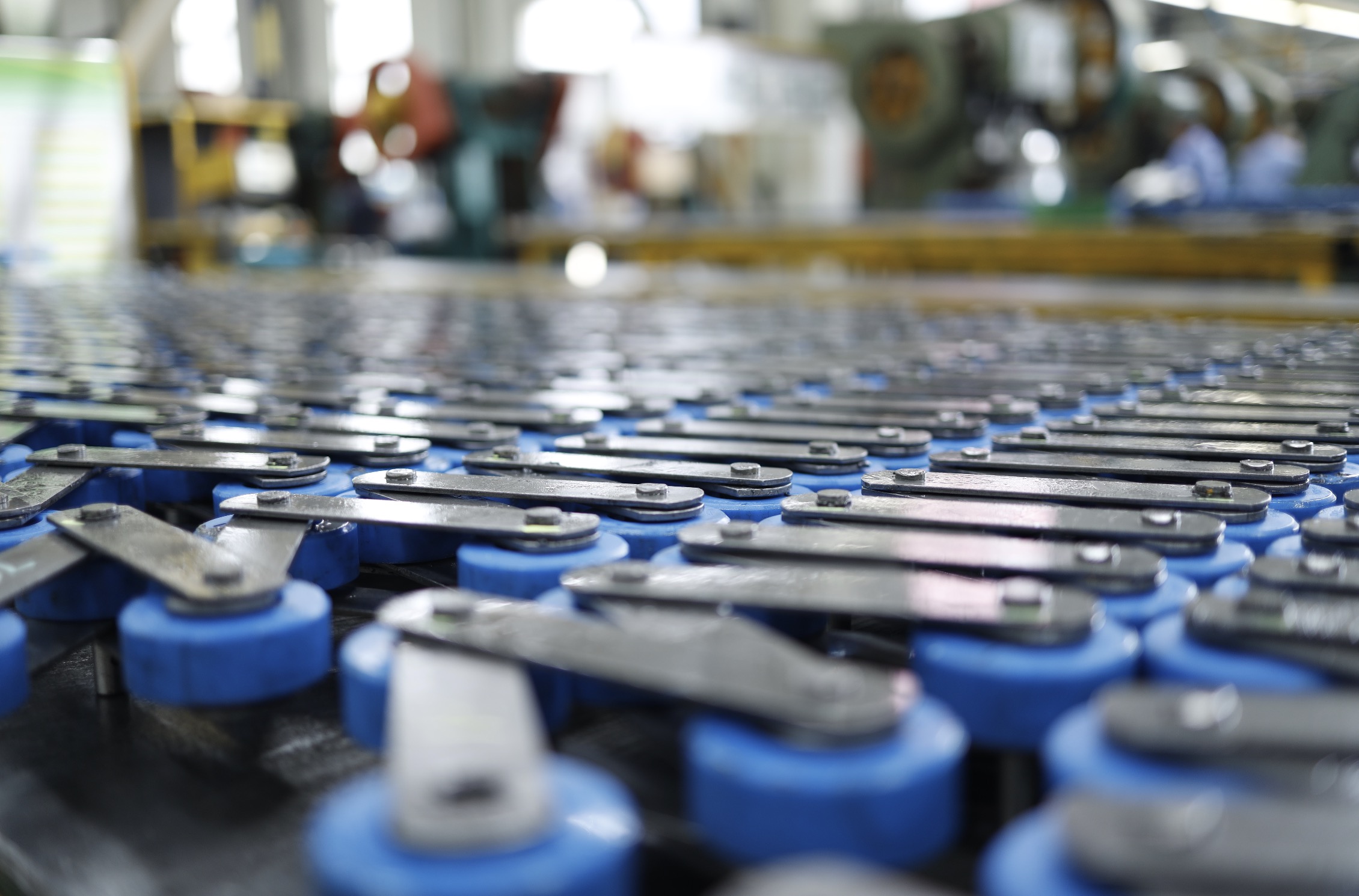Welded chain is an excellent choice for industrial use because of its increased strength. Its strength-to-weight ratio is much better than that of standard steel chains.
Higher carbon-content steel is also used to make welded chains. The resulting chain has high tensile strength but is not as heavy as a standard steel chain. Because of this, it is highly resistant to abrasive action, making it ideal for industrial use.
A welded chain’s quality can be determined by the materials used to manufacture it. Basic steel is used to manufacture this type of chain, and it is usually heat-treated for its maximum strength.
High-quality steel is used for welded chains. Its high-quality construction and excellent strength make it a great choice for industrial use. The strength of welded chain will depend on the size of the welded links.
If you want to know how strong welded chain is, continue reading this article.
What Is Welded Chain?
Welded chain is a common type of chain used in industrial and agricultural settings. Its design allows it to be lightweight and strong. There are two types of welded chains: carbon steel and stainless steel. It is ideal for heavy-duty applications.
Welded chains have been around since the 1930s. As the name goes, these chains are not fixed but are welded to add strength to the chain. The barrels of the chain is welded to the inside of the sidebar to make it more durable. It creates a high-strength chain for heavy-duty use.
Welded chain is stronger than a non-welded chain, so it is typically used for overhead lifting and tow applications. It is made of steel or stainless steel and is coated with a vinyl sleeve. Other types of welded chains include single-loop chains, double-loop chains, and agricultural safety chains. They are all made to withstand high loads and are used for many different purposes.
Types of Welded Chains
Welded chains are known for their strength and durability, making them suitable for a variety of heavy-duty applications. Here are the primary types of welded chains:
Steel Welded Chain
This type of chain is made by welding the links together, providing a robust and durable chain suitable for demanding applications. It is commonly used in industries like mining, forestry, and construction where strength and reliability are critical.
Heavy-Duty Welded Chain
Designed for the most challenging applications, these chains are manufactured with thicker links and higher-grade steel to handle extreme loads. They are often used in hoisting and lifting operations, as well as in heavy machinery and equipment.
Welded Steel Drag Chain
This chain features a unique design where the links are welded in a specific arrangement to improve the chain’s ability to move heavy materials over long distances. It is widely used in conveyors, especially in industries that handle bulk materials such as agriculture and cement production.
Welded Roller Chain
Combining the benefits of welded links and rollers, this chain offers smooth operation with reduced friction. It is used in applications that require efficient power transmission and material handling, like automotive assembly lines and industrial manufacturing.
How Strong Is Welded Chain?
The welded chain can be either high-grade or low-grade steel. The latter is a good choice for many applications. They are durable and economical. The higher-grade carbon steel chain has a higher strength-to-weight ratio and is more resistant to abrasive action. Welded chains are available in bulk and in containers. The strength of the finished chain depends on the steel grade.
Coil-welded chain comes in a variety of lengths, including short, medium, and long. They come in zinc and bright finishes and are packaged 100 feet per carton. Proof Coil Welded Chains are made from basic steel and are available in a zinc finish. They are available in 100-foot reels and 500-foot boxes. Machine-welded chains are ideal for heavy-duty applications and are often self-colored.
Passing Link Welded Chain is made from basic steel and is the strongest type of welded chain. It’s designed to pass freely through the links and has a bright finish. It’s also available in 7018, 6011, and 6010 welded chains. The hardest to find, the 6011 welding rod is used for heavy-duty applications, while 7018 and 6011 are the most common.
Welded chain is manufactured by welding the two ends of chains together without filler. The ends are heated to forging temperature. After the welding process, the chain passes to the welder, who machined the links without filler. Once the welder completes the weld, excess material is trimmed.
The ultimate breaking strength of a chain is determined by its grade. The higher the number of strands in a single link, the more durable it is. There are different grades of the welded chain. The high-grade chain is the strongest and most versatile type. Its tensile strength is about 55,000 psi.
The strength of a welded chain is measured as per the maximum working load capacity. Here is the maximum working load capacity of different types of welded chains.
- No. 80 Welded Steel Chain: Maximum working load capacity of 75 pounds
- Coil Welded Chain: Maximum working load capacity ranges from 195 pounds to 635 pounds depending on the size of the chain.
- Machine Welded Chain: Maximum working load capacity ranges from 215 pounds to 700 pounds depending on the size of the chain.
- Proof Coil Welded Chain: Maximum working load capacity ranges from 750 pounds to 4500 pounds depending on the size of the chain.
- Hi-Test Steel Welded Chain: Maximum working load capacity ranges from 2600 pounds to 9200 pounds depending on the size of the chain.
Applications of Welded Chains
Welded chains are versatile and are used in numerous industries due to their strength and durability. Here are some common applications:
Construction
Heavy-duty welded chains are essential in construction for lifting and securing heavy materials, ensuring safe and efficient operations.
Mining
The robust nature of welded steel chains makes them ideal for mining operations, where they are used to move heavy ore and materials, often in harsh and abrasive conditions.
Forestry
Welded chains are used in forestry for dragging logs and operating machinery, where strength and durability are paramount.
Agriculture
Welded steel drag chains are commonly used in agricultural equipment such as harvesters and conveyors to handle bulk materials like grains and crops efficiently.
Manufacturing
Welded roller chains are used in manufacturing plants for conveyor systems and automated machinery, providing reliable power transmission and material handling.
Automotive
In the automotive industry, welded chains are used in assembly lines and material handling systems to ensure smooth and continuous production processes.
Common Issues and Maintenance Tips
Despite their durability, welded chains can experience issues that affect their performance. Here are some common problems and maintenance tips to address them:
Wear and Tear
Over time, welded chains can wear down due to friction and heavy loads. Regularly inspect the chain for signs of wear, such as elongation or thinning of the links, and replace any worn parts promptly to prevent failures.
Corrosion
Exposure to harsh environments can lead to corrosion, weakening the chain. Use chains with corrosion-resistant coatings or materials, and apply lubricants to protect against rust.
Misalignment
Misaligned chains can cause uneven wear and reduce the chain’s lifespan. Ensure proper alignment of the chain and sprockets during installation and regularly check for alignment issues.
Overloading
Exceeding the chain’s load capacity can lead to premature failure. Always use the appropriate type and size of welded chain for the specific application and avoid overloading.
Lubrication
Proper lubrication reduces friction and wear. Use the recommended lubricants for the specific type of welded chain and apply them regularly to ensure smooth operation.
Inspection and Cleaning
Regularly inspect the chain for damage and debris. Clean the chain to remove dirt and contaminants that can accelerate wear and tear.



